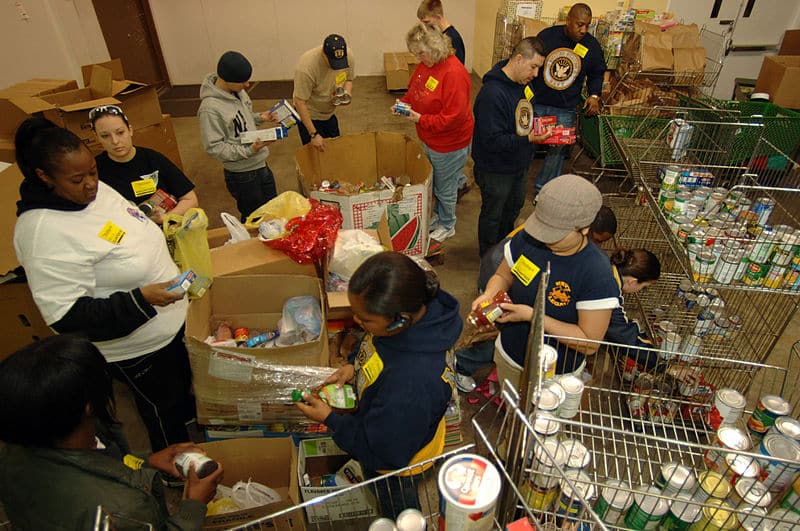A majority of Supplemental Nutrition Assistance Program (SNAP) participants are employed while receiving assistance but in positions with unstable hours resulting in income volatility, according a Center on Budget and Policy Priorities (CBPP) report released on March 13.
The CBPP – a nonpartisan research and policy institute focused on poverty and inequality – reviewed U.S. Census Bureau data of SNAP participants from mid-2009 to mid-2013.
 To qualify for SNAP, households cannot have more than $2,250 in “countable resources” (cash or savings in a bank account) – $3,500 if at least one family member is 60 or older.This analysis found that non-disabled adults “worked in the majority of months in which they received SNAP assistance” and that “over one-third of non-disabled adults worked in every month they participated in SNAP.”
To qualify for SNAP, households cannot have more than $2,250 in “countable resources” (cash or savings in a bank account) – $3,500 if at least one family member is 60 or older.This analysis found that non-disabled adults “worked in the majority of months in which they received SNAP assistance” and that “over one-third of non-disabled adults worked in every month they participated in SNAP.”
The report also selected for more detailed analysis one month in mid-2012 as a point-in-time measure of SNAP participants.
This revealed that “among non-disabled adults participating in SNAP … 52 percent worked in that month, but about 74 percent worked at some point in the year before or after that month (a period of 25 months). Rates were even higher counting work among other household members: over 80 percent of SNAP households with a non-disabled adult, and 87 percent of households with children and a non-disabled adult, worked in this 25-month period.”
CBPP identified lower-income jobs, frequently changing working hours and positions without benefits (such as paid sick leave) as “dynamics [that] lead many adults to participate in SNAP temporarily, often while between jobs or when their work hours are cut.”
To qualify for SNAP, households cannot have more than $2,250 in “countable resources” (cash or savings in a bank account) – $3,500 if at least one family member is 60 or older.
Monthly gross income can be no higher than 130 percent of U.S. poverty thresholds and monthly net income can be no higher than 100 percent of these thresholds. For a family of four, this is $2,665 (gross) and $2,050 (net).
SNAP funds are based on household size, with a family of four receiving $640 per month. A household is defined for SNAP participation as “everyone who lives together and purchases and prepares meals together,” with a few exceptions based on age and disability.
The following items cannot be purchased with SNAP funds:
- Beer, wine, liquor, cigarettes or tobacco
- Any nonfood items, such as pet foods, soaps, paper products, household supplies
- Vitamins and medicines
- Food that will be eaten in the store
- Hot foods
CBPP found that 44 percent of SNAP recipients are children, 35 percent non-elderly and non-disabled, and 21 percent elderly or disabled. Of the 35 percent, 22 percent have children and 13 percent do not.
“A majority of the adults who ever participated in SNAP in this three-and-a-half-year period participated in the program for less than two years total, with about two-fifths (44 percent) participating for one year or less and 20 percent participating for one to two years,” the report stated.
With three exceptions – persons under 18 and older than 50, women who are pregnant and persons with physical or mental disabilities – SNAP recipients must meet four work requirements:
- Registering for work
- Not voluntarily quitting a job or reducing hours
- Taking a job if offered
- Participating in employment and training programs if assigned by the state
SNAP recipients subject to these requirements are limited to three months of benefits if they do not meet these standards.
“Policies that would further limit SNAP for jobless participants would, sooner or later, harm many individuals who currently are working as well as poor adults who are looking for work, and those who face significant obstacles to employment,” the CBPP stated. “For individuals who earn persistently low wages, putting up additional barriers to receiving SNAP will not improve their labor market prospects or increase mobility. For those who are out of work for longer periods of time, many of whom face serious barriers to employment or are unable to work because they lack access to supports such as affordable child care, helping them increase their ability to work in a meaningful way would require an investment in resources, rather than a denial of basic food assistance.”
The full report is available here.






